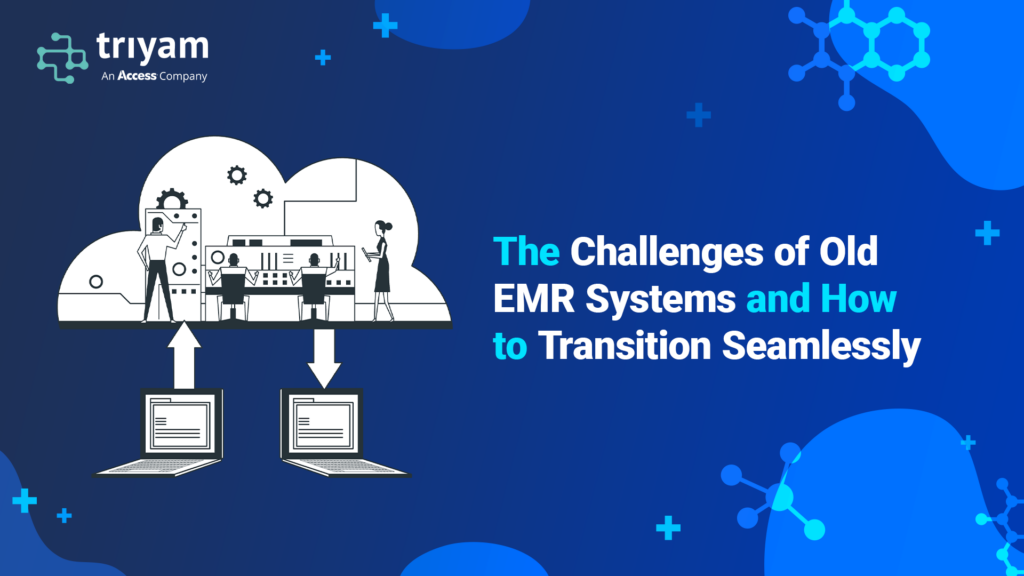Old Electronic Medical Record (EMR) systems, once the backbone of digital healthcare, are now being phased out in favor of more advanced and efficient solutions. These legacy systems, while groundbreaking in their time, present numerous challenges to modern healthcare organizations. Upgrading to a new EMR system can seem daunting, but a strategic approach ensures a smooth transition and organizations can reap the benefits of advanced technology.

You can contact us to learn more about handling old or outdated EMR systems. Let’s explore its limitations, risks, and the way forward.
Understanding the Limitations of Old EMR Systems:
Limited Interoperability: Older EMR systems often lack the ability to seamlessly share data with other healthcare systems, leading to fragmented patient records.
Outdated Technology: Many of these systems run on outdated software and hardware, which can be slow, unreliable, and costly to maintain.
Complex User Interfaces: Older EMRs typically have less intuitive interfaces, making them difficult for staff to use efficiently.
Restricted Functionality: Legacy systems may not support newer healthcare regulations and standards, limiting their usefulness in today’s compliance-driven environment.
High Maintenance Costs: Keeping these systems operational can be expensive, with costs related to vendor support, hardware repairs, and software updates.
The Risks of Delaying a Transition of Old EMR Systems:
Data Migration Difficulties: Transferring data from old EMRs to new systems can be complex and fraught with risks of data loss or corruption.
Security Vulnerabilities: Older systems are often more susceptible to cybersecurity threats due to a lack of updates and modern security features.
Inefficiency in Operations: Outdated systems can slow down clinical workflows and reduce overall efficiency in healthcare delivery.
Compliance Issues: Ensuring compliance with modern healthcare regulations can be challenging with systems that do not support current standards.
Transitioning from old EMR systems in healthcare organizations requires meticulous planning, expert guidance, and the implementation of effective data archiving solutions. By following these steps, healthcare providers can ensure a seamless transition, maintain data integrity, and continue to deliver high-quality care while complying with regulatory requirements. Embracing new technology while responsibly managing legacy systems is crucial for the advancement of global healthcare initiatives within the nation.
The Key Steps to Transition from Old EMR Systems:
Data Assessment and Cleansing: Before migration, it is crucial to assess the data for accuracy and relevance, and cleanse it to eliminate errors.
Data Archiving Solutions: Implementing data archiving solutions like Triyam’s Fovea EHR Archive can help manage historical data effectively, ensuring it remains accessible and compliant with retention regulations.
Expert Data Migration: Partnering with data management specialists ensures a smooth and secure transition from old EMR systems to new platforms.
Training and Support: Providing adequate training and support for staff is essential to facilitate the adoption of new EMR systems and minimize disruption.
While old EMR systems have played a significant role in the digitization of healthcare, their limitations necessitate a shift to more advanced solutions. By understanding the challenges posed by these legacy systems and adopting strategic approaches to data migration and archiving, healthcare organizations can enhance efficiency, security, and compliance in their operations. Effectively managing and transitioning from old EMR systems in the US requires careful planning, expert guidance, and the implementation of robust data archiving solutions. By following the right steps, healthcare organizations can ensure a seamless transition, maintain data integrity, and continue to provide high-quality care while complying with regulatory requirements.
